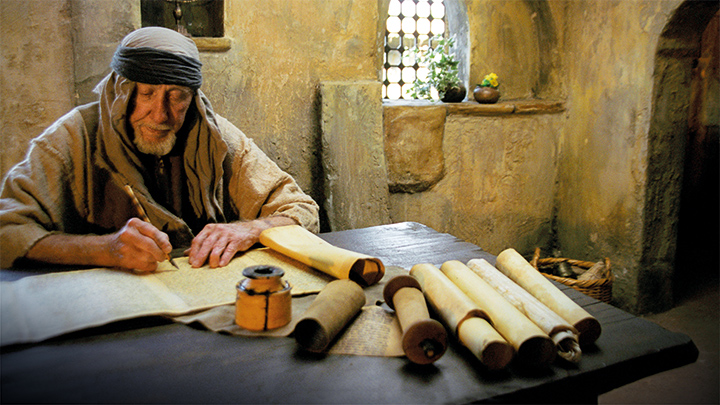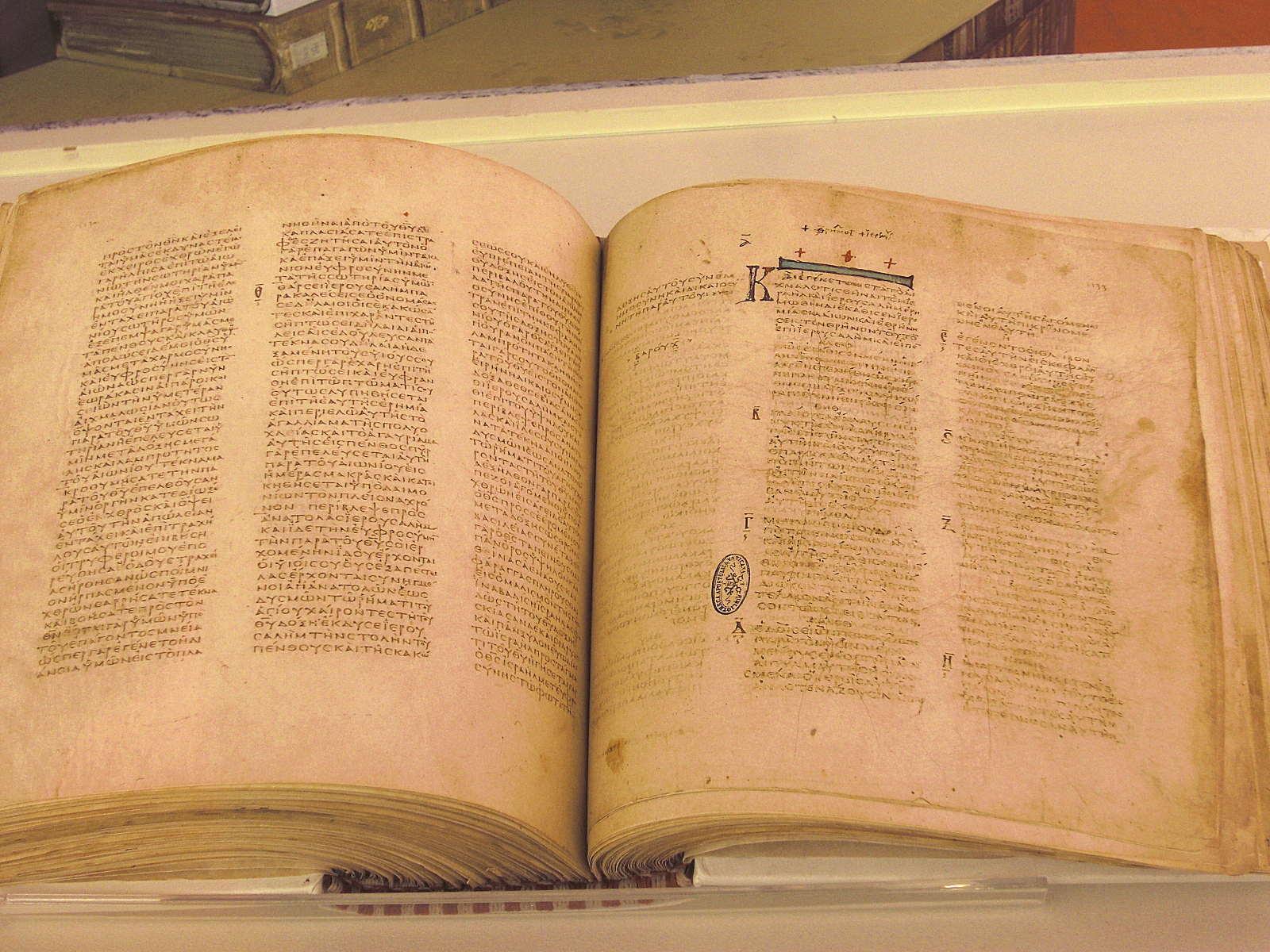
No other book has had such an impact on human history. It has guided the course of nations and influenced the political philosophy that produced liberal democracy. And it has transformed countless individual lives, changing criminals into peaceable citizens. The book, of course, is the Bible.
Just what is this book like?
Some people have compared the Bible to a library. It does resemble a library in that it’s a collection of “books” written individually and later collected together. The bible contains 66 of these “books”, which are further divided into two sections: The Old Testament is the first 39 books, while the New Testament covers the final 27 books. The Old Testament consists of the books written before Jesus’ birth—some of them nearly 1500 years before. Much of this Testament is focused on telling the story of the Jewish people. It begins with the book of Genesis and follows through the story of God’s chosen people, the nation of Israel. The first five books (Genesis, Exodus, Leviticus, Numbers and Deuteronomy) make up what is known as the Pentateuch (or the Written Torah in Judaism) and describe the origin of the Jewish nation and culture—highlighting key figures or leaders such as Abraham or Moses. Following this, the Old Testament continues to tell the story of God’s people and their experiences prior to the coming of Jesus in a variety of books, including Joshua, 1 & 2 Samuel, Isaiah and more.
The books of the New Testament consist of those that were written after Jesus’ time on earth and His crucifixion. These books, written by members of the first century church and early Christians tell both the story of Jesus, and provide advice for followers of Christianity or the Christian faith at the time.
Obviously, many people were involved in writing the Bible—about 40, in fact. While some of the people who wrote the books of the Bible were unknown chroniclers of Israel’s history, some were famous Bible characters, such as Moses, David and Paul. And much of the New Testament was written by the first disciples of Jesus or their close associates.
Nearly all the Old Testament was originally written in Hebrew, though a few portions of Ezra and Daniel were written in Aramaic, the language of Babylon, a Semitic “first cousin” of Hebrew. The New Testament was written in Greek, the common language of the Mediterranean world at the time. This wasn’t the lofty classical Greek of philosophy and literature; it was the dialect used in personal letters to friends and family and in bills and receipts. So biblical Greek really was the language of the common people.
No original manuscripts
Printing wasn’t invented until the middle of the 15th century AD. Before that, when people wanted copies of books of the Bible, a scribe had to write them out by hand. And when a book of the Bible became worn out, it was usually either discarded or ritually destroyed. So, unfortunately, no original manuscript of a book of the Bible exists today. Codex Vaticanus (so named because it is kept in the library of the Vatican in Rome) is the earliest nearly complete manuscript of the New Testament. It was copied sometime during the early fourth century AD, which was 250 to 300 years after the last book of the New Testament was written.

However, scholars have found smaller pieces of the New Testament that are older than Codex Vaticanus. For instance, there’s a fragment of the Gospel of John that was written about AD 125, not too many years after the original.
The oldest copies of the Old Testament books that we have are the Dead Sea Scrolls. The Dead Sea Scrolls are ancient writings on parchment (a few are written on papyrus and bronze) dating from about 200 BC to around AD 200. They were first discovered accidentally by Bedouin shepherd boys in 1947 in caves near the Dead Sea in Israel, hence the name “Dead Sea Scrolls.” Fragments or significant parts of all the books of the Old Testament have been identified except for Esther. The most complete manuscript is an entire Isaiah scroll, which, except for a few damaged parts, includes the entire book. Also included in the Dead Sea Scrolls are sectarian works written by the Jews who lived at Qumran, and passages of apocrypha (religious books of the time which are neither part of the Hebrew Bible or the Christian Bible). The Israeli Antiquities Authority has collaborated with Google to digitise all of the scrolls. They are available online for anyone to see and for scholars to study at DeadSeaScrolls.org.il. In comparison to the remaining New Testament manuscripts, even more time separates the Dead Sea Scrolls from the original versions of the books they replicate.
Translation
Because the authors of the Bible didn’t speak English, most of us read translations. The various translators of the Bible have adopted one of two philosophies: emphasis on a literalistic, word-for-word translation, or a focus primarily on conveying the meaning of the passage.
Most modern translations fall somewhere between the extremes of these two philosophies. The King James Version and New Revised Standard Version lean toward the word-for-word approach. Translations such as the New Living Translation and Eugene Peterson’s The Message lean strongly toward the other approach. And other popular translations, such as the New English Bible and the New International Version, fall somewhere in between.
History, poetry, letters
The Bible resembles a library not only because it’s composed of many “books,” but also in that both the genre of these books and their subject matter vary greatly. We’ve already mentioned that some books of the Bible consist of history. The apostle Paul said that what happened to ancient Israel “occurred as examples to keep us from setting our hearts on evil things as they did” (1 Corinthians 10:6).
Many of the Old Testament books were written in the form of poetry. When we think of poetry in the Bible, the Psalms or Proverbs probably come to mind first. Psalms were the hymns of the Hebrew people—the lyrics of their worship songs. But most of the books of the prophets were also written in poetic form. Contrary to what we might expect, biblical prophecy didn’t primarily involve foretelling the future. Instead, the prophets called their readers to reject false religion, be faithful to God, and follow His principles of justice and mercy.
The New Testament begins with four books: the Gospels (Matthew, Mark, Luke and John). Their authors primarily meant these biographies to give us a clear picture of God through recording selected incidents and teachings from the life of Jesus Christ, the Messiah (John 14:9). Their primary purpose is to bring us to faith (John 20:30, 31).
Some parts of the New Testament are epistles—letters from early church leaders to individuals, to specific Christian church congregations or to the Christian community as a whole. Often, the leaders wrote these letters to help the young churches deal with problems they were facing. When we know what the problems were, we’re more likely to understand the counsel the leaders gave and how to apply it to our lives today. The final book of the New Testament, the book of Revelation, is another example of bible prophecy, this time in the form of what is known as apocalyptic literature which presents a vision of the final days.
The Divine Word?
Christians believe that the Bible is more than just a collection of historical texts. The Holy Bible, as many refer to it, is a sacred text which represents not just the written word of men who followed God, but is the divine Word of God Himself. Both the Old and New Testaments are holy scripture which were written by men, but inspired by the Holy Spirit. In this way, while the Bible has many authors, it has one vision guiding it—that of God. This can be seen in the way that both Testaments point towards the key message of the Bible: the story of Jesus and the sacrifice he made to save us.
The Bible is for reading
Paul wrote that the Scriptures “are able to make you wise for salvation through faith in Christ Jesus” (2 Timothy 3:15). But there’s no magic in the pages themselves. They bring eternal life only as we find Jesus Christ in them (John 5:39). And of course we can find Him there only if we’re looking—if we’re reading the stories about Him. So whether or not we’re benefiting from this “library” of books given to us by God through His prophets is entirely up to us.
Curious about some of the key beliefs of Christianity? Check out the other articles in our Fundamentals series to see if you can find the answers you need.
David Jarnes is a contributor for Signs of the Times.









